Bocian's Extended 25V driver
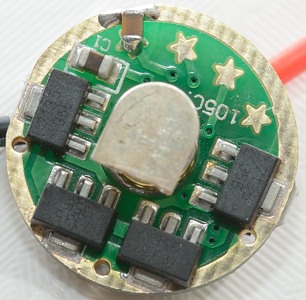
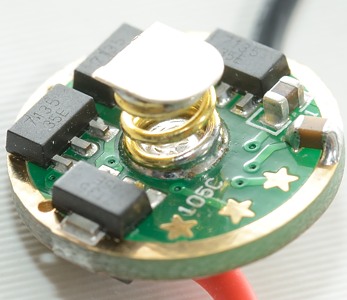
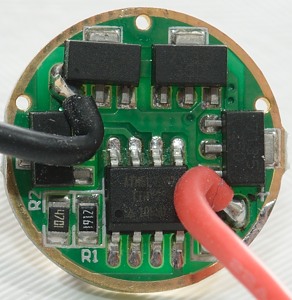
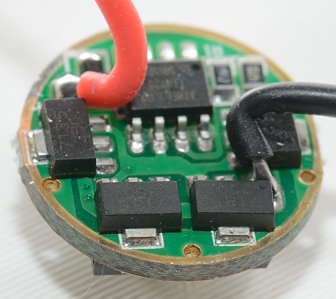
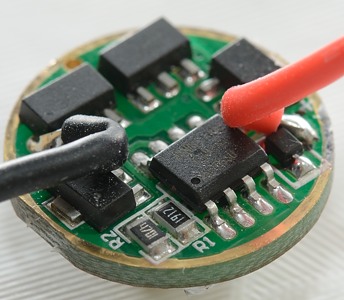
Driver is made as a hobby project by a guy called Bocian, he sells it at CandlePowerForums and BudgetLightForum
This driver uses a more advanced microcontroller, this has improved the battery voltage readout and added temperature control compared to the 13A driver.
Official specifications (There is none, only a instruction sheet):
- Can be ordered in 2.8 or 3.04A versions.
- 4 modes selected from 11 brightness settings.
- Strobe with same brightness as selected brightness.
- Battery measurement.
- Low battery warning.
- Very high pwm frequency.
- Adjustable temperature control
Measurements
Tested with Cree XM-L2 led
Driver diameter 16.9mm
Driver height 6.3mm
Driver uses linear regulation with pwm.
Driver has 4 programmable brightness levels and a strobe mode.
The default programming is 0,15%, 10%, 32%, 100%. This can be restored with a 8 off/on cycles.
The driver has memory and a short off/on will select next mode.
Pwm is 16kHz
Strobe 4Hz with 50% duty cycle, brightness follows selected mode.
This driver is based on a standard 7135 driver with a slight hardware modification and a much more advanced program.
The different functions/possibilities can be accessed with a number of clicks:
1 click: next brightness level.
2 click: previous brightness level.
3 click: strobe.
4 click: report battery level.
6 click: program brightness for selected level.
8 click: reset to default.
9 click: calibrate temperature
10 click: increase temperature limit 5°C
12 click: decrease temperature limit 5°C
All the oscilloscope traces are done at 3.6 volt.
As usual pulsing current (i.e. pwm) makes it difficult to calculate power and efficiency. In any modes except high I am calculating with a fixed led voltage, but due to the high pwm frequency it is not very precise.
Due to the high pwm frequency the power and efficiency calculations has large errors in the lower modes
Brightness level 100%
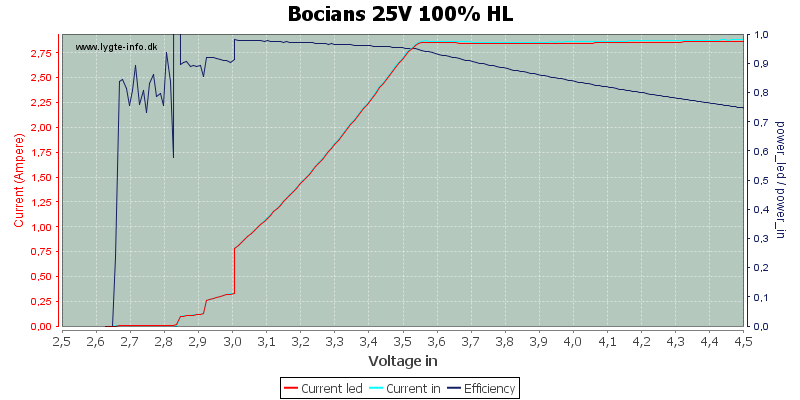
In high (100%) mode the driver is just a 8x7135 driver, except it starts stepping down and giving warnings when the battery voltage is low and it will turn off when the battery is empty.
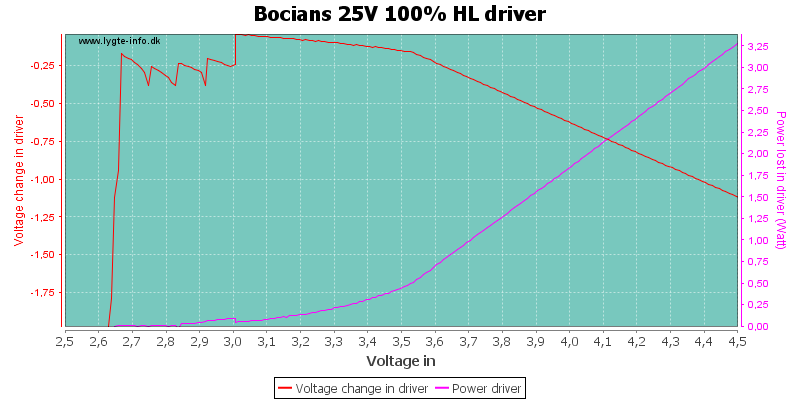

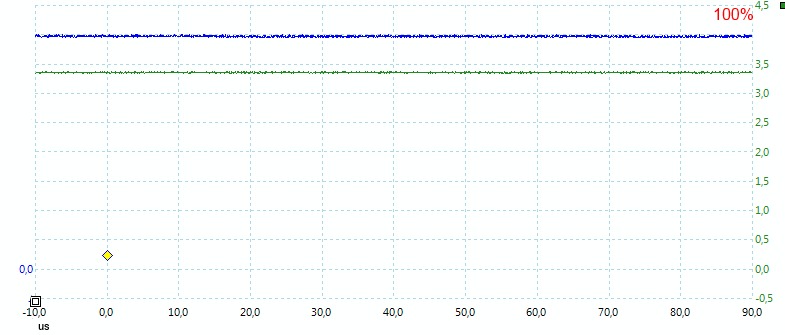
No pwm in high, it is completely disabled.
Brightness level 70%

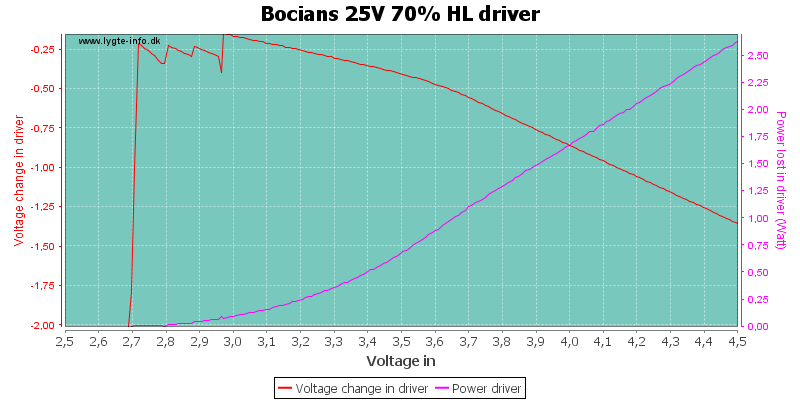
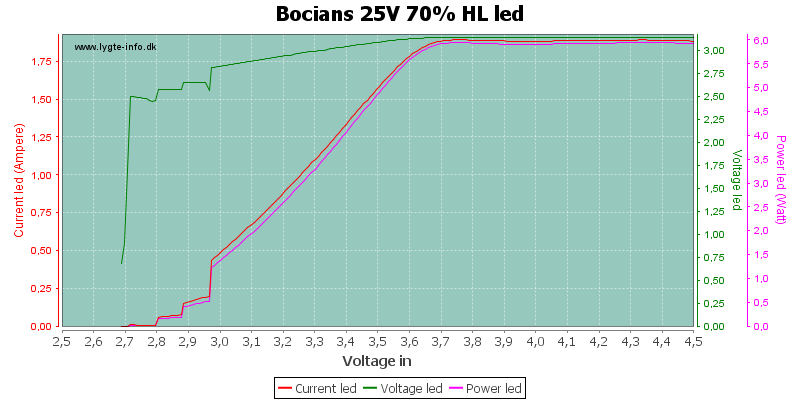
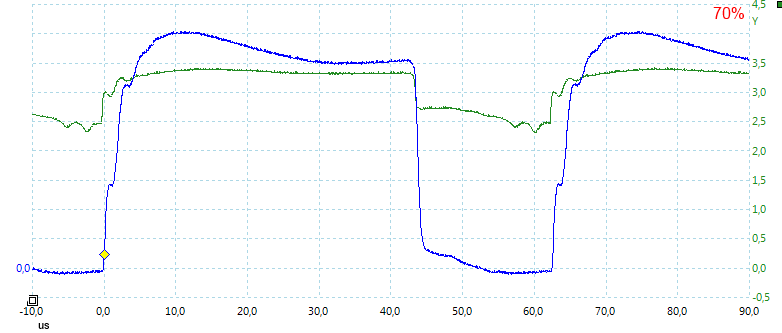
Due to the high pwm frequency, the pwm pulse is not square, but has a more smooth shape.
Brightness level 50%
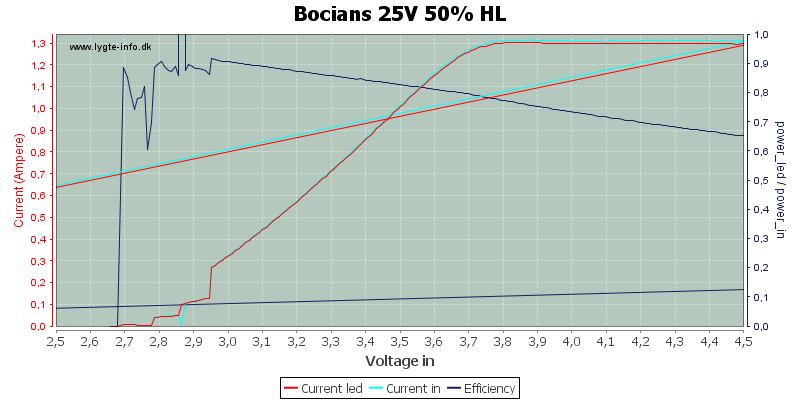
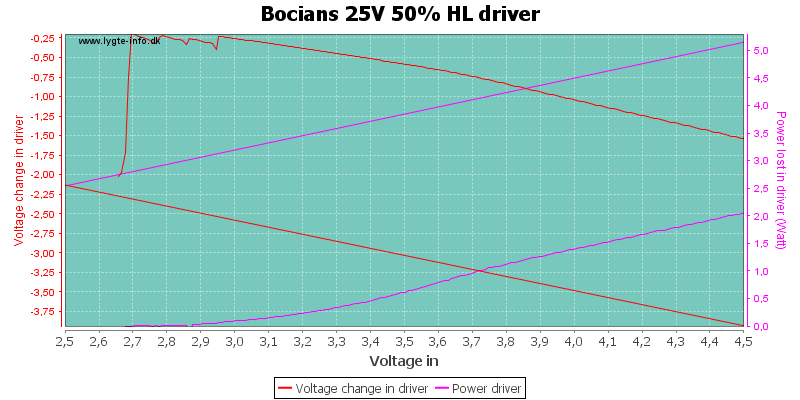
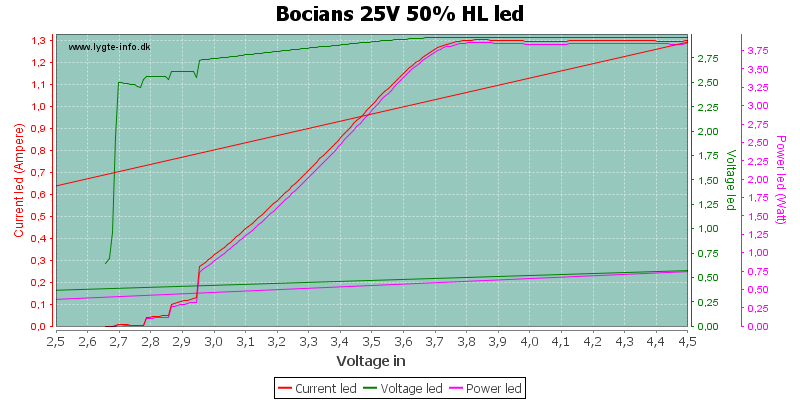
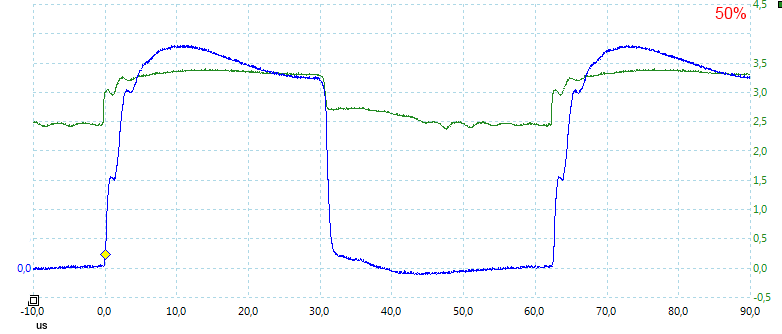
Brightness level 32%
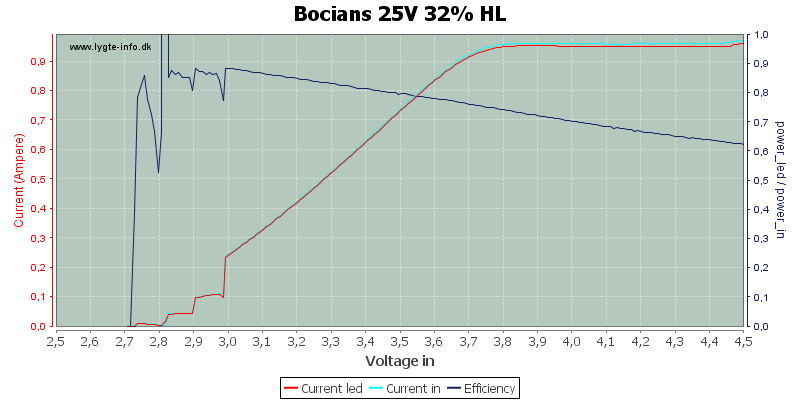

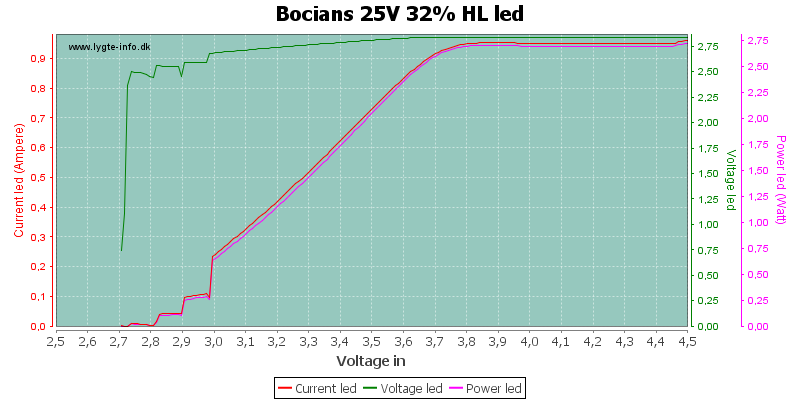
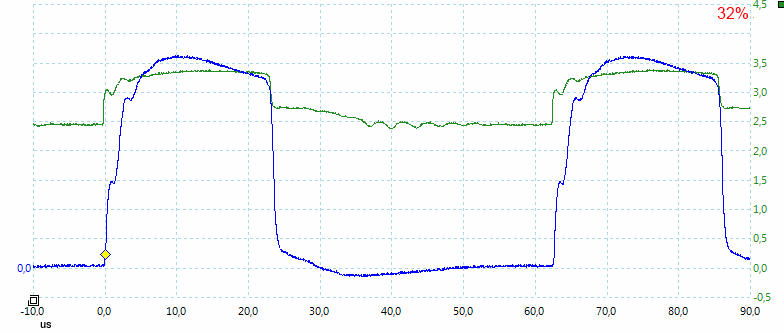
Brightness level 25%
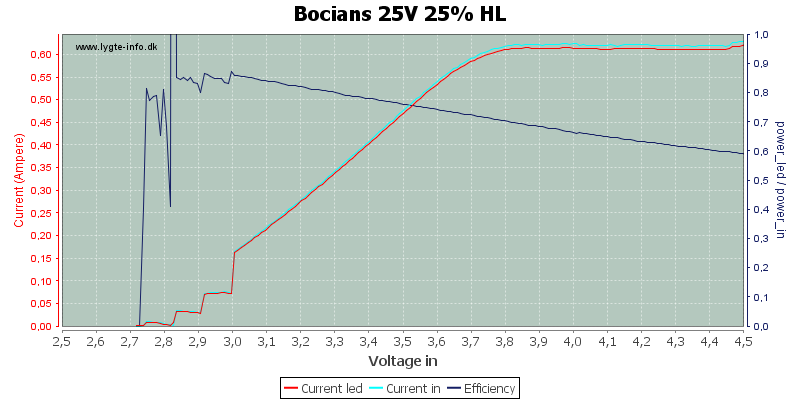

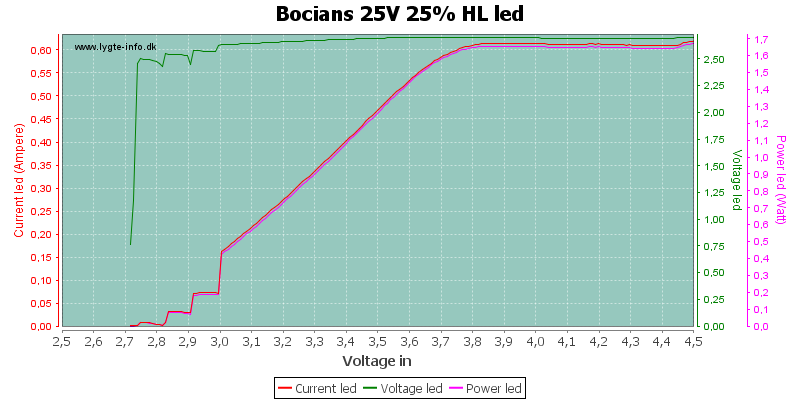
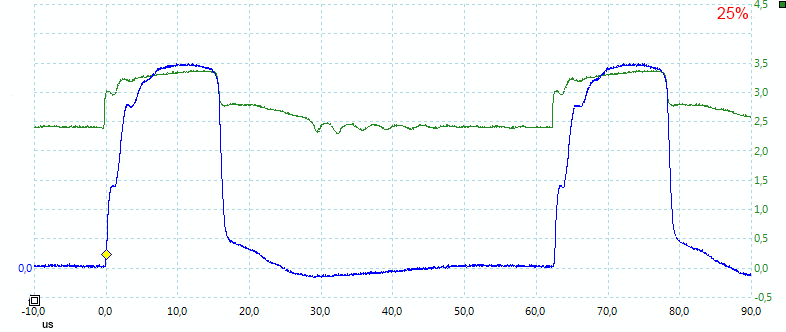
Brightness level 18%
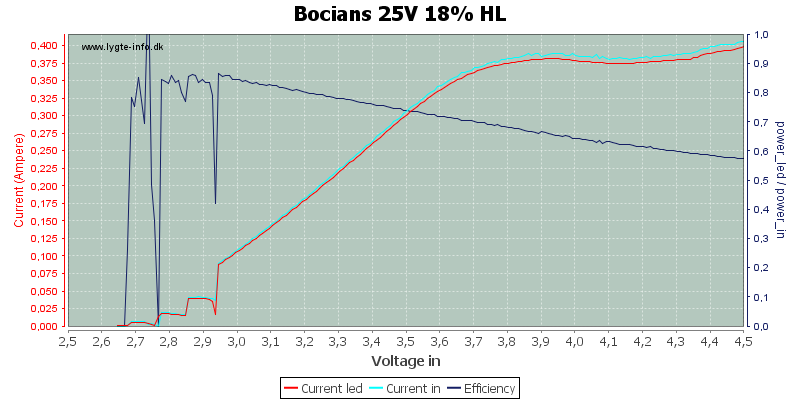
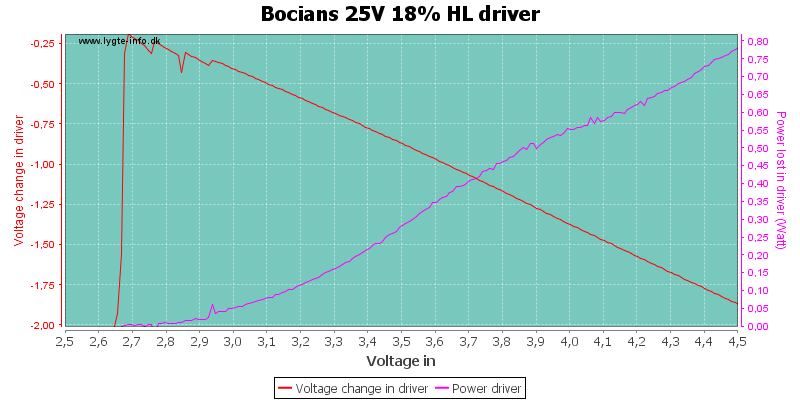

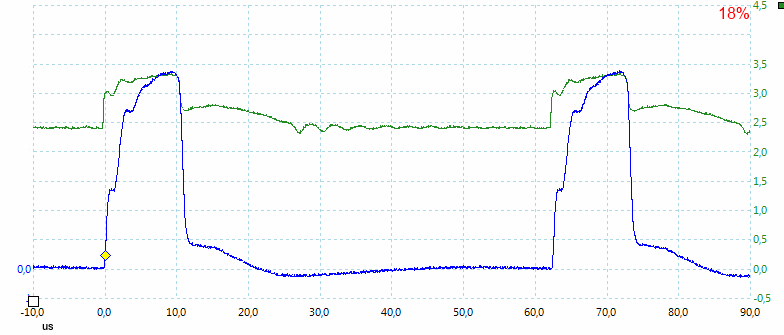
Brightness level 10%
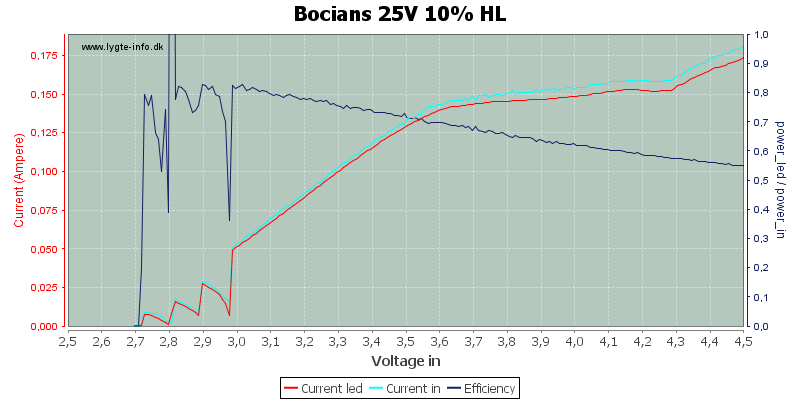
On this chart the step downs, when the battery is nearly empty, are very easy to see.
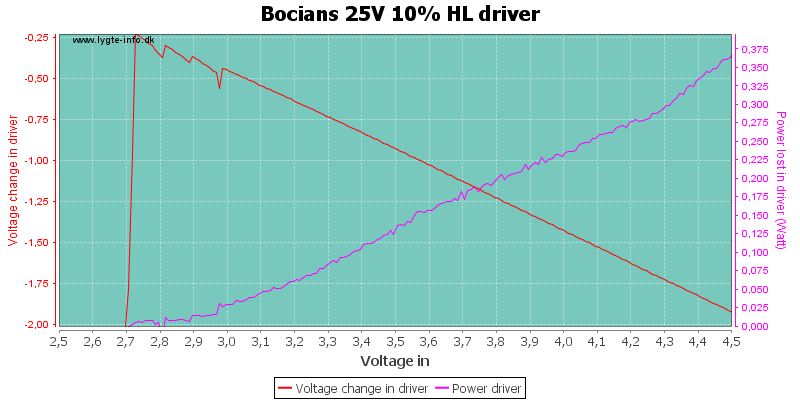
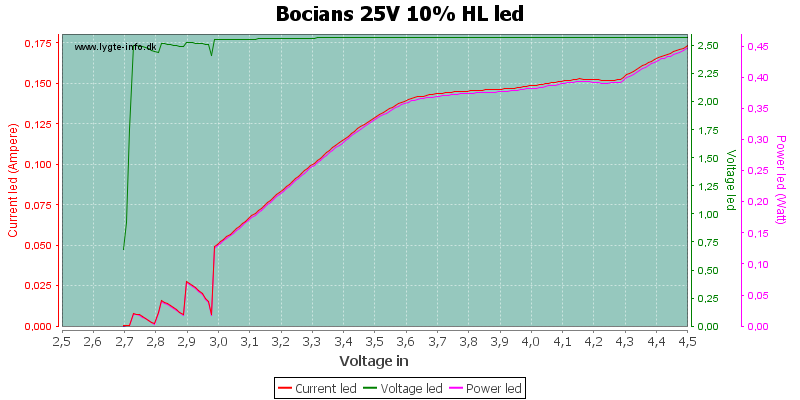

At 10% the driver does not even reach stable brightness.
Brightness level 4%
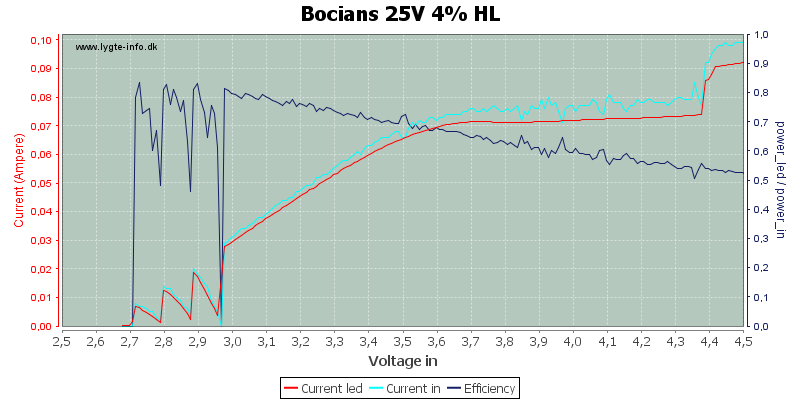
Notice that the brightness/current has two different levels of stabilization. My guess is that the microprocessor can only turn the driver fully on at 4.4 volt and above.
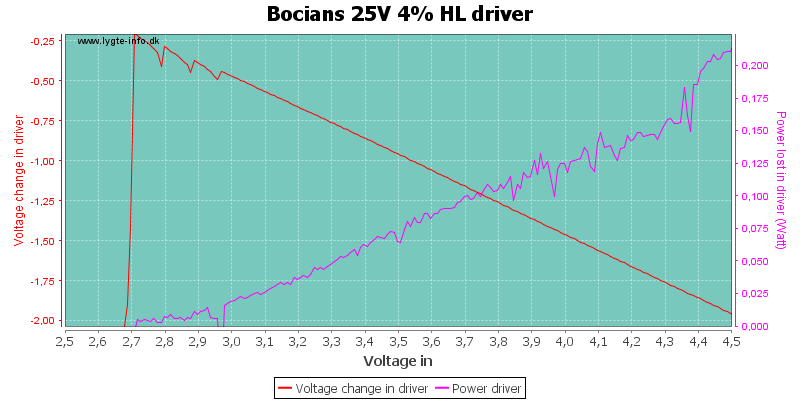
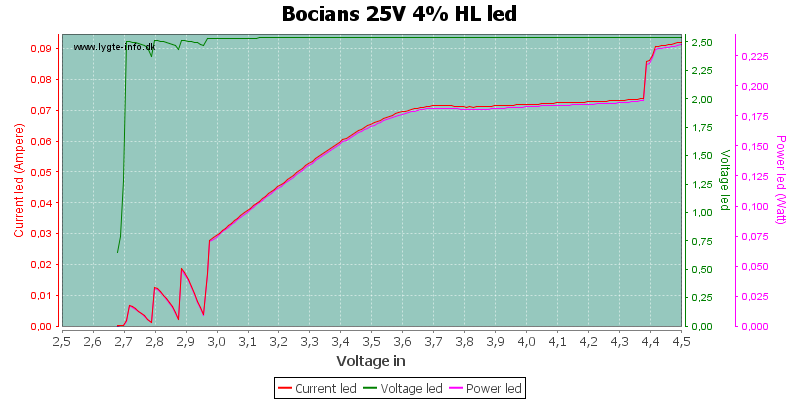
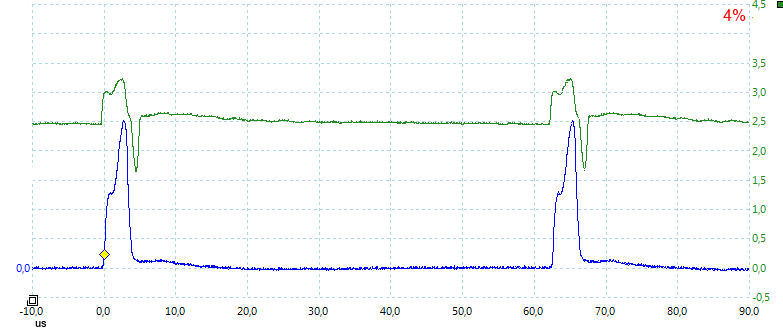
Brightness level 1%

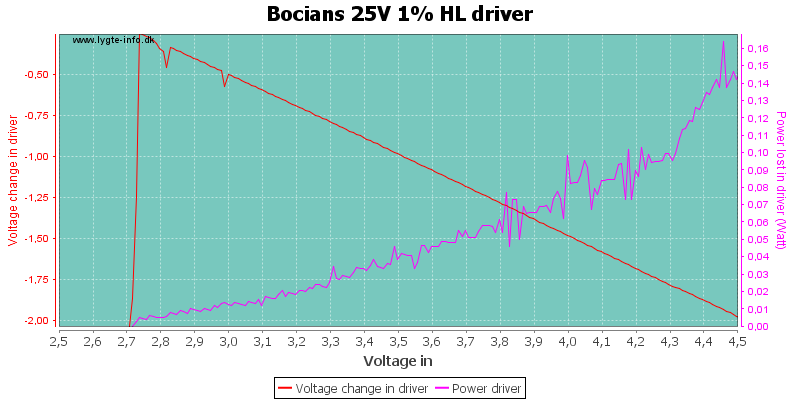

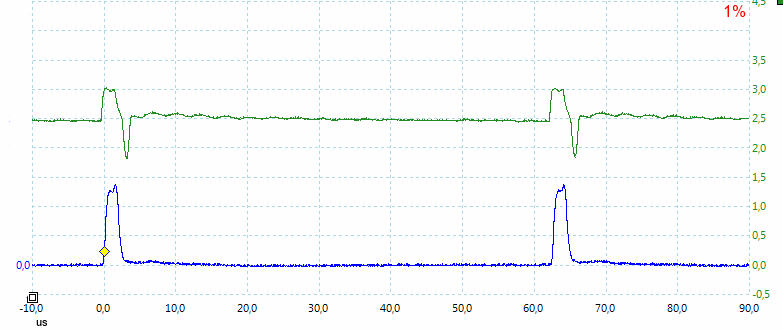
Brightness level 0.15%
This mode is at the limit of my setup, the steps in the input current is my resolution in the power supply.
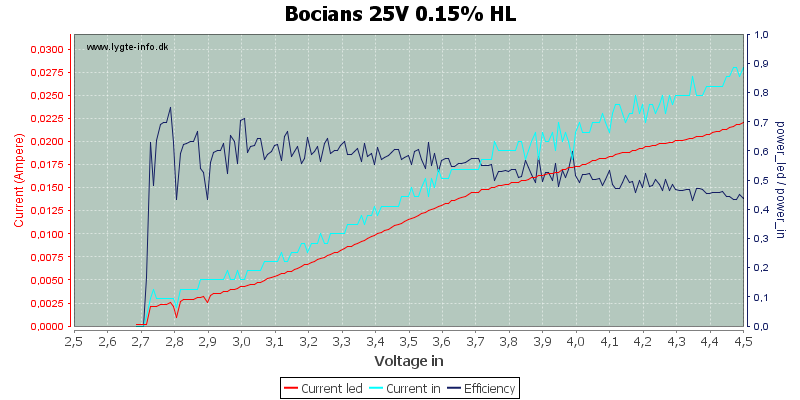
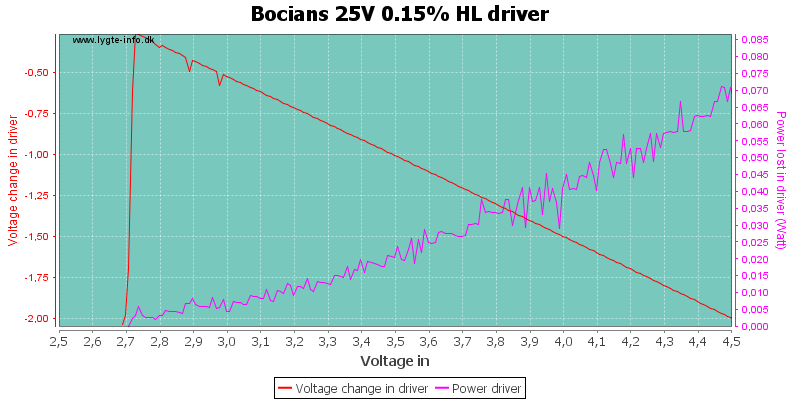

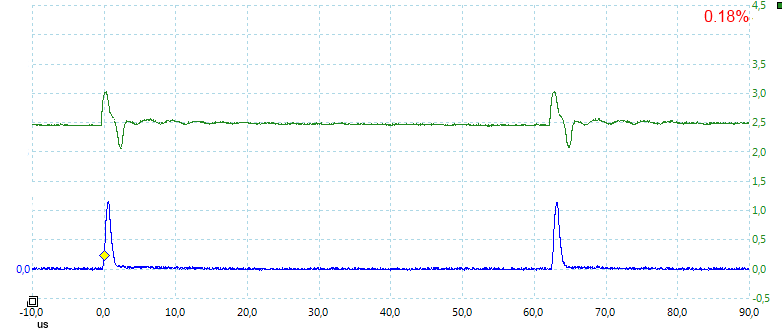
The driver does barly turn on in this mode.
Brightness level 0.02%
Sorry, no curves. The level is too low to register in my setup.
The specifications also has this note: not always visible – depends on variability of electronic components parameters
Strobe

The strobe can be activated at any brightness level and will use the same pwm setting, in addition to strobeing.
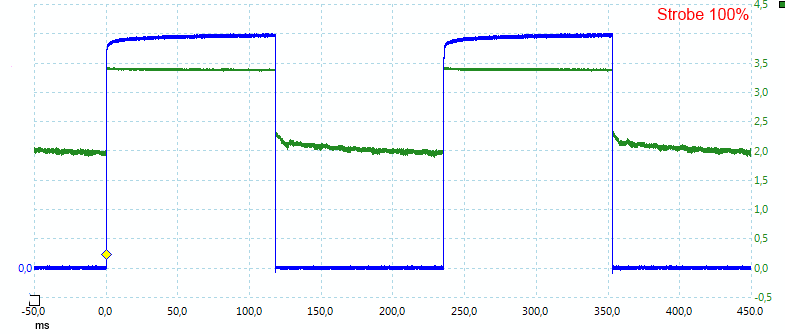
At 100% there is no pwm.
The strobe frequency is 4 hz.
Voltage check
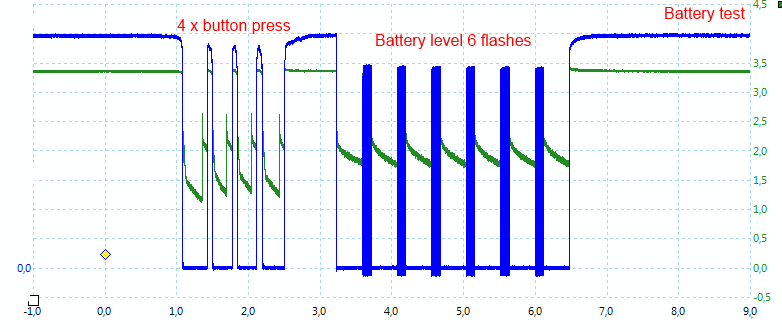
The driver has a build in battery check, that will show a number of flashes, depending on battery voltage.
For this driver there is a flash for each 0.1 volt above 3.0 volt, i.e. 6 flashes is 3.6 volt.
Temperature control
The temperature sensor in the microprocessor is used to add a extra safety layer to the driver.
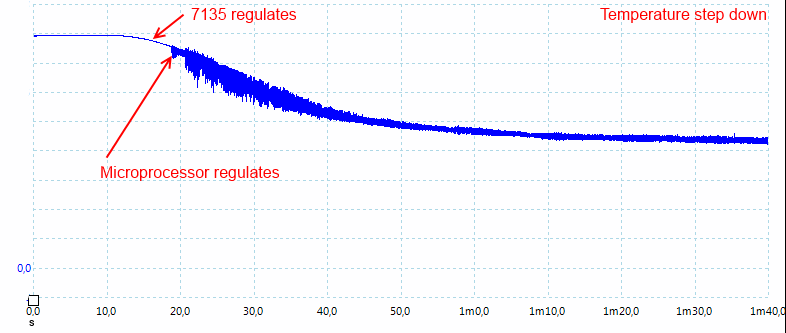
In my test here I uses a very high battery voltage (4.5 volt), to make things happen fast.
The 7135 has a build in temperature regulation at 150°C, this is fine for protecting the chip, but not everything in or around a flashlight like the temperature this high. By using the temperature sensor in the microcontroller it is possible to add a much lower limit for the system (i.e. flashlight).
Default is around 60°C, but it can be adjusted.
Conclusion
It is interesting to see what can be done with this driver. The programmable modes makes it much more flexible and the temperature regulation is a nice safety feature.
Except for the high pwm (I would have preferred 1 to 2 kHz), I like the driver.
Notes
The driver was supplied by Bocian for review.
How do I test a led driver
List of all tested drivers
















































